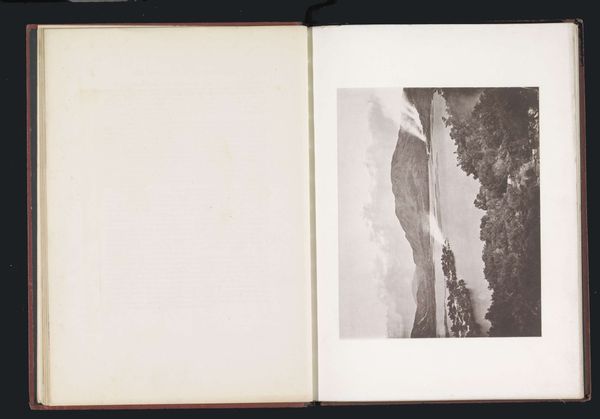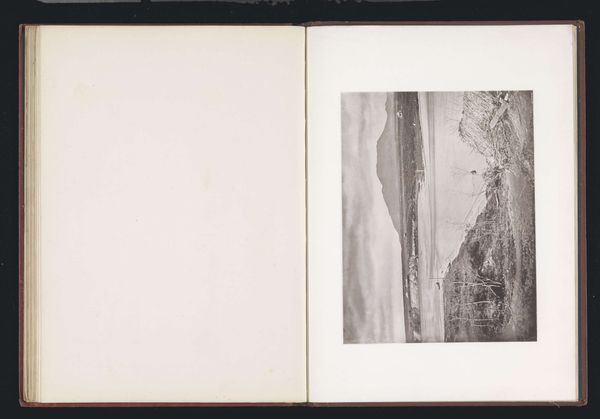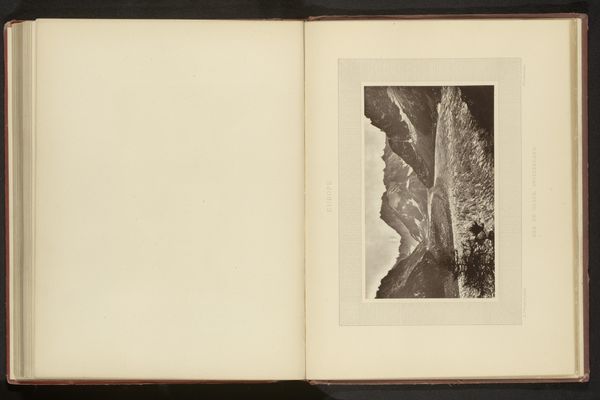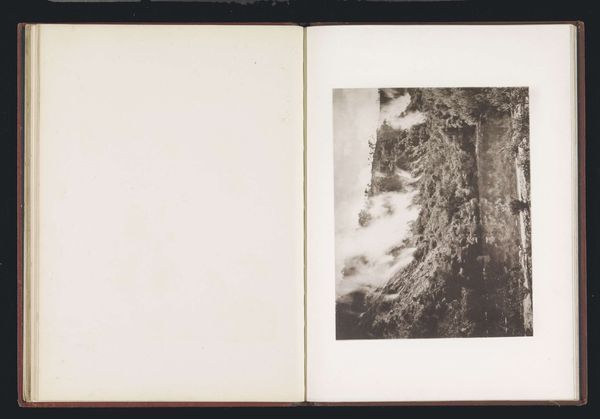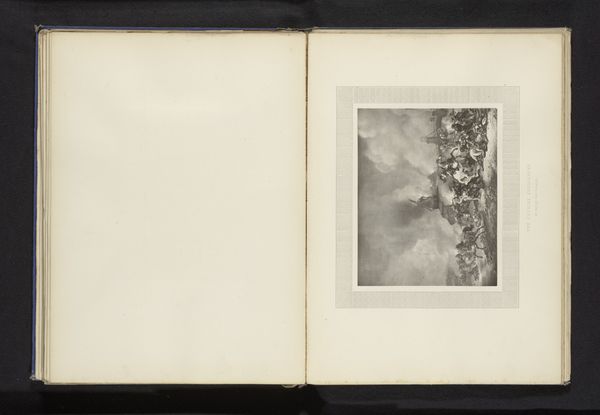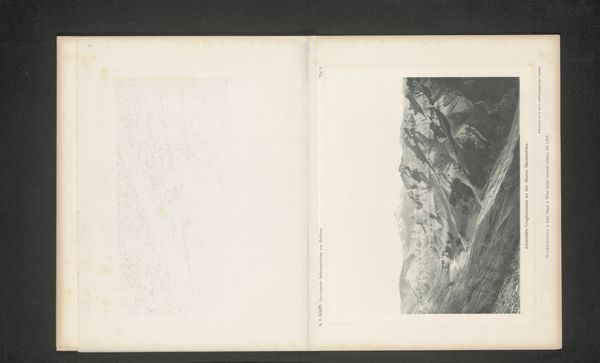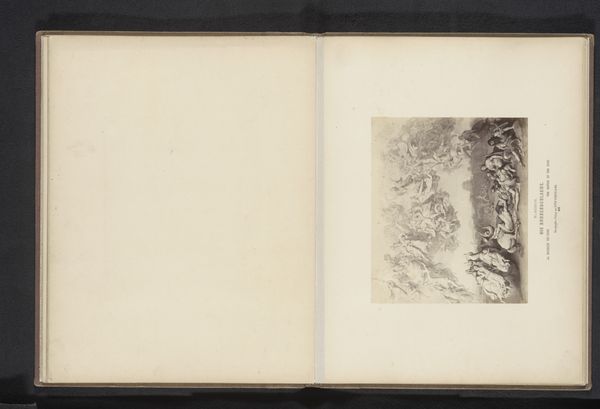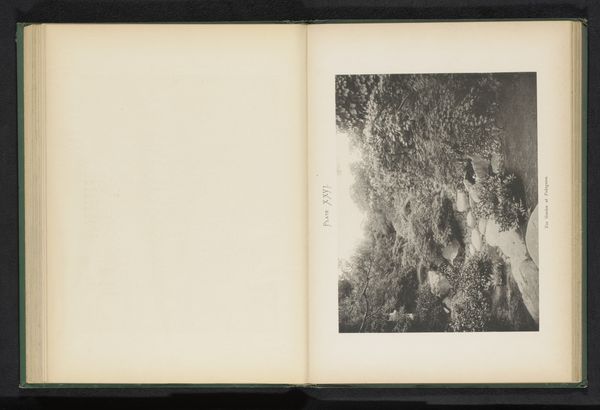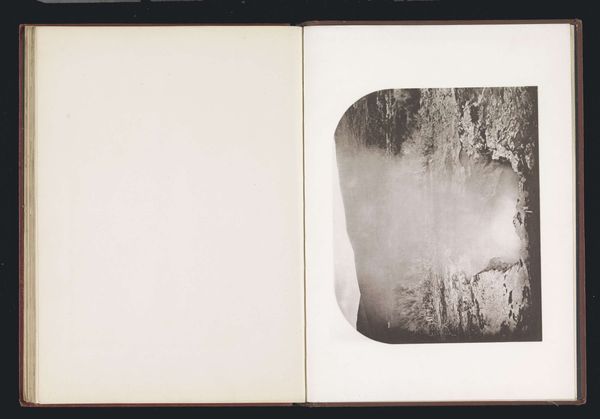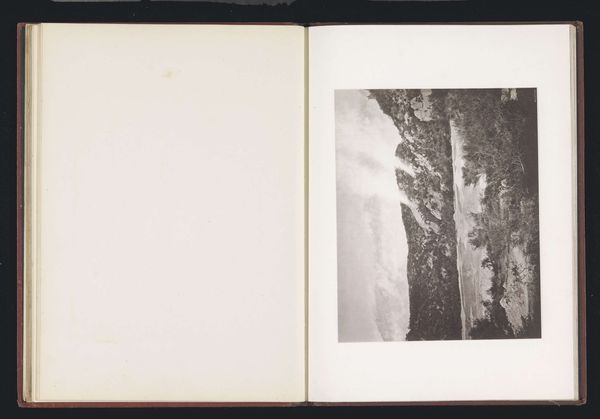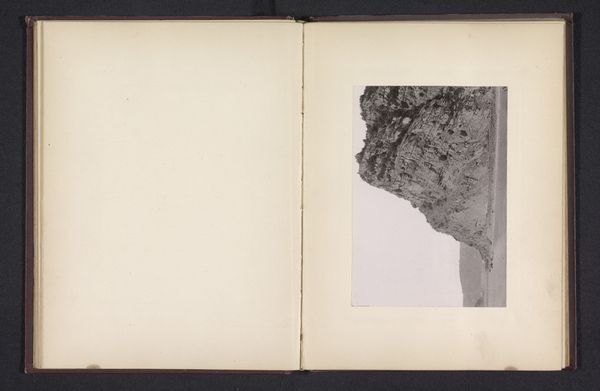
photography, albumen-print
#
lake
#
landscape
#
photography
#
albumen-print
Dimensions: height 198 mm, width 253 mm
Copyright: Rijks Museum: Open Domain
Editor: Here we have Daniel Louis Mundy’s "Geiser nabij Lake Rotomahana," an albumen print dating from around 1865 to 1875. The detail is really striking. It’s fascinating to consider the labor involved in creating photographs using the wet collodion process at this time. What stands out to you? Curator: For me, the albumen print immediately evokes a question about material processes. How does the transformation of raw materials—the silver salts, the paper, even the egg whites used in the albumen—relate to the colonial project of depicting and "capturing" the New Zealand landscape? This wasn't a purely artistic endeavor; consider the economy and networks supporting photography at that time. Editor: So you’re suggesting that the photograph itself is evidence of resource extraction and commodification? Curator: Precisely! And look at the landscape it depicts, Lake Rotomahana, now destroyed. It points to a geological and social reality altered through colonialism and tourism. The print’s very existence is interwoven with processes of settlement, documentation, and unfortunately, in this case, environmental transformation and loss. The sale and display of images like this helped develop markets that reshaped environments, did they not? Editor: It's easy to forget the materiality when we see old photographs like this. Thanks for highlighting that intersection between the process, landscape, and its consumption! Curator: Thinking about materials really allows us to think about all the work that went into not just the artistic vision, but the actual making of the art, and the broader societal impacts.
Comments
No comments
Be the first to comment and join the conversation on the ultimate creative platform.
